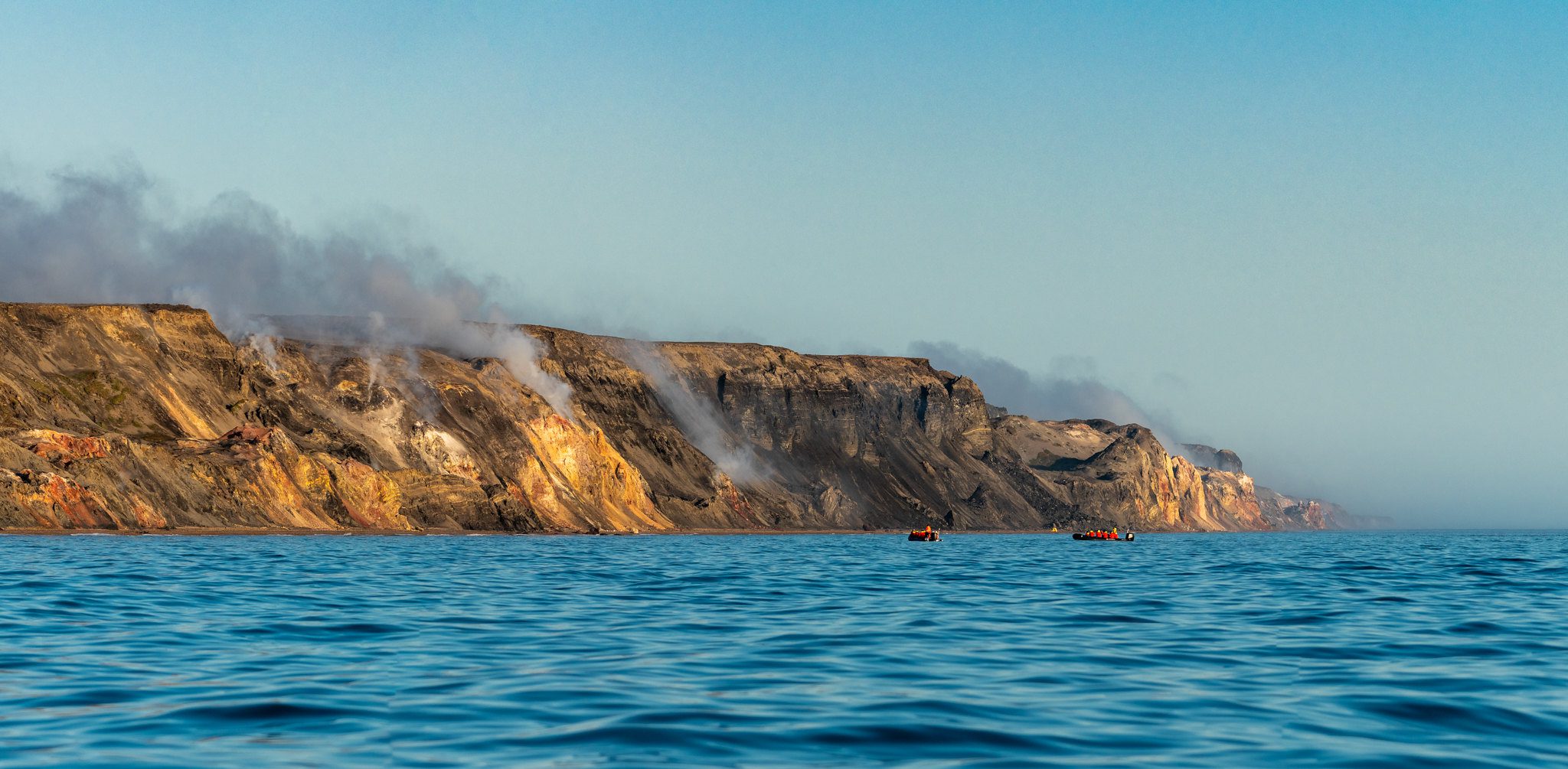The Smoking Hills of Canada may look like they’re the product of volcanic activity or strange geothermal forces deep beneath the Earth’s surface, but the smoldering landscape is actually the result of an ongoing chemical reaction that’s been running for thousands of years.
This hellish sight is found on the east coast of Cape Bathurst in Canada’s Northwest Territories, not far from the Arctic Ocean.
The smoke is created by the spontaneous auto-combustion of rocky oil shale in the cliff face’s rocky layers. Sulfuric minerals, like fool’s gold, and the brown coal deposits react to the air when parts of the cliff are eroded away, combusting and producing a steady stream of smoke.
As a result of this reaction, the surrounding area is pumped full of sulfur dioxide, making the air toxic and difficult to breathe. It’s also dotted with pools of ruby-red water that’s unbelievably acidic and rich in sulfur. As if this place couldn’t get any more hellish, the high levels of sulfur also mean it reeks of rotting eggs.
“It’s just really like hell on Earth. […] everything about it is absolutely horrible,” Steve Grasby, a research scientist at the Geological Survey of Canada who studies the geochemistry of sedimentary rocks, told the Government of Canada’s Simply Science podcast.
Another shot of the Smoking Hills in all their blazing glory.
“The ground is really hot. It’s black. Everywhere is black. It’s just kind of deep muck that you walk through. So you feel like you’re going to get stuck in this hot mucky ground. And then there’s chimneys of smoke coming out. Loud, steam sounds. And then you get this strong smell of hydrogen sulfide,” he said.
“You have to wear all this protective gear or else you’re just going to burn your eyes and your throat. It would just probably kill you instantly if you got too close to these sites,” Grasby added.
It’s not clear how long the smoke has been blasting out of the hills, but Grasby says the reaction likely started somewhere between 7,000 to 10,000 years ago when the glaciers receded in the area and unearthed this rock face.
The cliffs have featured in Indigenous culture for centuries, but they were first documented by Europeans in 1826 during the voyages of British explorer John Franklin. In 1850, Irish explorer Robert McClure and his crew set out of the Canadian Arctic looking for the sailors from the lost Franklin Expedition. When they saw this smoke, they were said to have been elated, believing they had identified a smoke signal from the doomed crew. Alas, they were gravely mistaken.
This strange landscape might appear to be nothing more than a freak novelty, but scientists have closely studied this environment and believe its otherworldly characteristics could help to develop our understanding of Mars’s potential to host extraterrestrial life.
Source Link: Like Hell On Earth: Chemical Reactions Fuel The Smoking Hills Of Canada
